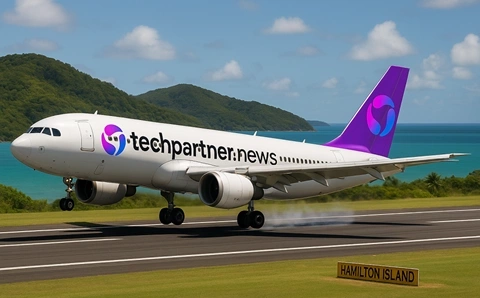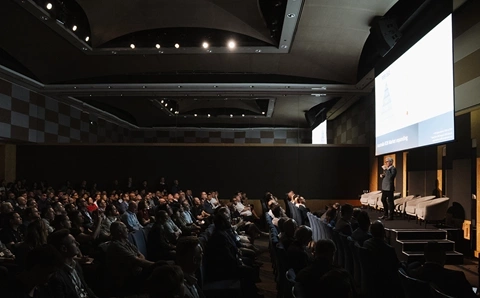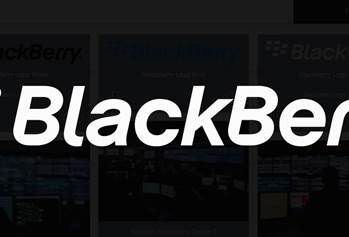In terms of digital transformation projects at scale, the Australian digital divide remains an issue that has yet to be equitably resolved. The broadband disparity between regional areas and metropolitan towns continues to stifle the opportunity for regional areas to share the same parity to access digital transformation opportunities as the coastal cities.
The viability and success of any digital transformation project is squarely based on the network infrastructure that supports it. For network service provider NetVault, which resells a range of access technology solutions including Starlink, solving this technical disequilibrium drives their strategy, technology choices and vision to one day unify broadband access from coast to coast and every black spot in between.
NetVault technical director Radek Tkaczyk states “there's always been a digital divide here in Australia. You've got metropolitan areas that have always had good internet connectivity prior to the NBN. They had fibre, they had ethernet over copper, even DSL wasn't too bad in some of these, in some of these more residential-type areas. But as soon as you went outside of the metro areas and to the regional areas, it was only satellite. Previously satellite was both expensive and very slow. It also was subject to issues with reliability with cloud cover and storms. I mean, you could sneeze the wrong way and a satellite could go offline, right?”
Back in the 1990s, the first evolution of LEO (low earth orbiting) satellite services was fiscal failures because of high costs and few opportunities for serviceable deployment. The nascent days of 2G fever were also in full swing and blocked the opportunity with the promise of ubiquitous mobile access.
In the current LEO market iteration, the constellations have found their moment. The desperate need for access in regional and remote areas, surprisingly the emergency needs in war zones and cheaper price points or at least subsidised offers have pushed market penetration and demand and created an economically viable offering.
Mobile inaccessibility
In Australia and other markets that still suffer from mobile inaccessibility, the LEO satellite offering presents the only real chance for digital transformation in rural and remote areas.
“This low orbit technology, which we're talking about here is pretty much making those higher earth-orbiting satellites redundant because the throughput latency performance of these Starlink services and generally low earth orbit is far superior to geo stationery,” Tkaczyk says.
According to Tkaczyk, the LEO constellations have the power and potential to close the digital divide in a very short space in time and transform the digital fortunes of regional communities that are growing in population, commerce and sophistication but hamstrung by the lack of capable infrastructure that not only connects but also withstands the onslaught of environmental factors such as floods and fires.
“What Starlink or any general low earth orbit technologies bring to the equation is being able to bring the same speeds of what you were getting in the metro regions into the regional communities. By doing that, it means that people can actually work from home and not have to spend two hours commuting back into the office. You can have proper telehealth appointments, and video conferencing and not have to spend hours or take flights to get to the medical centre. Currently, the Royal Flying Doctor service is heavily looking at solutions like this, so they can avoid having to fly out frequently to underserviced places,” he says.
“A traditional GEO- stationary satellite service, like an NBN Sky Muster satellite service, has a distance from the earth to the satellite of 36,000 kilometres. Starlink is not deploying satellites that far out, they are e only 550 kilometres away, 10 times closer, therefore, 10 times faster. The problem with having satellites so close to the earth is that in order to maintain orbit around the earth, that satellite needs to be moving at 26,000 kilometres per hour. So that means you can't just have one satellite. You need thousands of them.”
NetVault started its relationship with Starlink via the digital transformation initiative, Project Halo, which was a $100,000 internet package grant developed by NetVault, SpaceX, and Cisco to give a regional school in Australia the opportunity to experience 21 st century internet speeds, rather than in many cases, dial-up levels. As part of the grant, a selected schools and 30 students or teachers received a satellite terminal for use in their home.
These terminals are included as part of the grant free for 12 months, along with NetVault's 4g LTE technology, powered by Cisco routers and ten Cisco video phones that the school can use throughout the buildings for video conferencing facilities in the school.
Project Halo received 230 applications from schools applying for the grant, the successful school was based in Lismore. The week that NetVault was due to deploy their Project Halo prize was the week that the catastrophic floods decimated parts of Northern NSW.
“You could not make this up. And because of that, we had Starlink dishes in stock ready to go for Halo and other projects that we were working on for getting Starlink services deployed and installed. We had NBN Co, Telstra even the SES reaching out to us saying they needed help to get online after communications had been severed since the flood hit.” Whilst they had the infrastructure and dishes ready to go, the problem was that the Starlink services were GEO locked to a 22 kilometre radius cell.”
Tkaczyk spoke to his contacts at SpaceX, asking for help to cover the government departments and evacuation centres screaming out for communications.
“The feedback I kept getting back was no, no, no, we can't do it. We can't do it. I'm like rubbish. I know you can do it. You've just done it in Ukraine for Christ's sake. I wasn’t getting anywhere with my contacts at SpaceX, so what do you do in desperation? I did a tweet to Elon Musk. Now, two hours later, Mick Fanning, the world's number one surfer who lives in Byron Bay did his own tweet to Elon as well saying we need help with the flood disaster in NSW. Because Mick has that magic blue tick next to his name that celebrities get on, it got some attention. So I'm not sure if it was actually Elon himself or someone higher up in SpaceX but they said, okay, we'll make it happen.”
SpaceX turned on roaming for 10 dishes. NetVault then faced the hurdle of delivering the dishes through roads which were cut off and dangerous. Northern Rivers locals arranged logistic support, a truck came to Brisbane to collect these 10 dishes and deliver them to Byron Bay and they were deployed at the evacuation centres and importantly the Westpac emergency helicopters centre which had also been flooded. "
"The service delivered 150- 200 megabits per second bandwidth from dishes mounted in the roof using Starlink rapid deployment kits which only require power at the ground station and power at the dish itself.
“As part of Project Halo, we are now working with the Department of Education NSW, SA and Queensland. In Queensland, there are many schools that are still connected via satellite, NBN sky master satellite services that mean that those schools cannot do online learning effectively or cannot, access the resources for research projects,” he says.
Starlink is still deploying their global network constellation currently comprising 2000 satellites with a target of 4,400 for phase one completion. Currently, Starlink has 14 ground stations here in Australia and is building more as they grow.
Currently, all of NSW and South Australia are covered by the Starlink network but the Northern parts of Australia are not quite available yet with the ETA for full coverage anticipated to be in Q1 of 2023. NetVault is doing alpha testing in some of those areas around Broome and Darwin.





.jpg&h=142&w=230&c=1&s=1)


.png&h=142&w=230&c=1&s=1)




.jpg&w=100&c=1&s=0)







.jpg&q=95&h=298&w=480&c=1&s=1)



